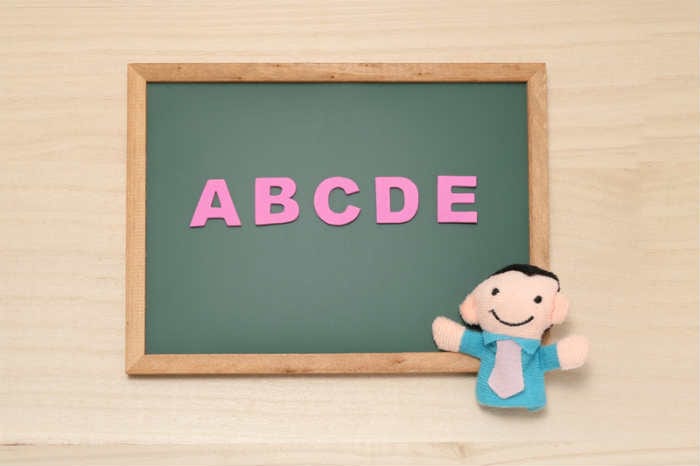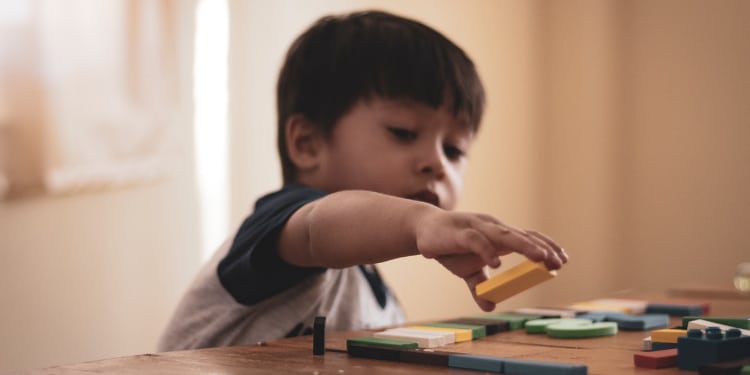











Play therapy is a psychotherapeutic approach that is used to help children explore life and their surroundings freely. Play therapy uses play to help deal with psychological issues that a child might be experiencing. This form of psychotherapy is mainly geared towards children ages 2-13, to help them communicate, explore suppressed emotions, address unresolved trauma, and experience personal growth. However, it can benefit teens and adults as well. Like most forms of psychotherapy, the goal is to help patients resolve emotional conflicts, but rather than achieving this exclusively through dialogue, it capitalizes on the natural ability to express feelings through play.

Play therapists use storytelling, music, puppet play, creative movements, and or dance as well as playing with toys, (toy phones, stuffed animals, dolls, action figures, water, sand, blocks, Legos) arts and crafts, and board games. Children are also encouraged to play freely and explore things for themselves.
Play therapy may include family sessions, where caretakers of the children are invited to be involved in their play during therapy. Unlike family therapy, though, child play therapy focuses on healing and strengthening the individual child as separate from the rest of the family. Through this play, as well as the special therapeutic relationship, the therapist helps the child accept his or her emotions, develop trust and confidence, and improve their behavior.
Hermine Hug-Hellmuth is widely regarded as the world’s first psychoanalyst to specialize in treating children and the first person to use play as a form of therapy. She introduced a formal play therapy process in 1921, as she provided children with the necessary materials to help express themselves through play.
David Levy’s work came to light in 1938, when he developed an approach called “release therapy” which he used to encourage traumatized children to engage in free play while gradually introducing materials that were related to the traumatic events, therefore allowing them to experience the trauma again, but in a less stressful manner, therefore helping them release any unresolved negative emotions or actions that relate
Anna Freud, the youngest child of the famous neurologist, Sigmund Freud, presented arguments for the importance of play in a child’s life and as a means to build a positive relationship between the child and therapist, therefore allowing the therapist better access to a child’s inner thoughts and emotions.
Roger Phillips posited the idea of combining cognitive therapy and play therapy in the early 1980s. Cognitive behavioral play therapy has since then been used to treat children as young as two years old.
When a child is experiencing adverse personal issues, they sometimes act out by engaging in inappropriate behaviors. For a child who is unable to communicate his or her wants or complex ideas like emotions, acting out can be a way to reduce stress or an attempt to show otherwise hidden emotions. A lot of parents find it hard, or even impossible to access these hidden emotions or even provide effective aid to a child that is unwilling to discuss the problem. Play therapy is thought to be one of the most effective ways to help children deal with these “big” emotions. Playing can help relax the mind from the stresses of life.
Since the goal of treatment is to access these hidden emotions and address them systematically, the therapist works to help create a safe, comfortable, and welcoming environment for the child with as few restrictions as possible. In play therapy, the therapy area is referred to as the playroom, which is simply what it implies – for the child to freely play and explore. The playroom encourages independent play but comes equipped with a selection of specially designed therapeutic toys that are meant to help encourage the child to express his or her feelings. This helps to develop a healthier replacement for these inappropriate behaviors. The child’s interaction with these toys will essentially serve as a symbol in which they communicate. The therapist can observe specific emotions and thoughts that the child may not have expressed or might have difficulty expressing with words.
Intervention would usually start with the child playing freely across the play as he or she wishes, while the therapist observes, gently placing themselves into the child’s play. This is important because the child must feel completely safe and less guarded to freely express his or herself. The therapist would slowly begin to introduce specific items or play activities that are related to the issues that the child is experiencing, as the therapy progresses.
The play that is initiated or directed by the therapist usually aims to directly create opportunities for the child to act out their fears, anxieties, and emotions in a completely safe way. For example, the therapist might offer the child some action figures and ask the child, depending on his or her age and comprehension level, to act out feelings or problems they have at home.
Play therapy is not limited to children. Play therapists are trained to treat issues faced by teenagers and even adults. A lot of people, especially adults, have forgotten how to play or the ability to playfully explore life because society expects adults to show a certain amount of maturity and responsibility. Play therapists are trained to work with children, teenagers, and adults. They can also work with the elderly to help them relearn the values in play.
Adults and Children who may benefit from play therapy are those affected by the following mental health conditions:
Play has been suggested for several decades now as a great intervention for children who have intellectual disabilities; a limitation of intellectual functioning, including reasoning, problem-solving, and social skills. Research suggests that play therapy can help individuals with intellectual disabilities gain adaptive behaviors that can affect their social and emotional development. Play therapy can also help address problem behaviors that are exhibited by individuals with intellectual disabilities, as play can be a means for them to communicate their frustrations and develop replacement behaviors for the maladaptive ones.
Play therapy can be a means for children and even adults who have experienced some kind of traumatic event (abuse, loss or grief, divorce, sexual abuse). Play therapy can gently access and address these memories safely. Play is a child’s most natural form of expression. Play therapy encourages the expression of a child’s feelings, experiences, and cognitive functioning in a non-threatening manner. By relying less on language, play-focused therapy is a developmentally sensitive treatment modality, and particularly appropriate for children who have experienced trauma.
Trauma can make the verbal part of the brain shut down; the experience is stored at a sensory level that can be difficult to access. Play allows these memories to be expressed and explored non-verbally so that they can eventually be integrated into a more verbal narrative. Through the appropriate combination of acceptance, guidance, and structure, the client-therapist relationship creates a sense of safety for the child or adult who has experienced the trauma.
Individuals diagnosed with mild cognitive decline have many needs. At this stage, these individuals have trouble focusing on things and experience forgetfulness; they might begin to experience forgetfulness in finding the right words when communicating. Play therapy can allow these individuals to explore their unconscious minds as it can help to increase functional engagement with different activities, keeping their minds active. This might come in the form of drawing, painting, music, and or any former hobby or interest of the person.
Research supports the effectiveness of play therapy for those experiencing a wide variety of social, emotional, behavioral, and learning problems. Play therapy helps children (and adults):
The number of sessions that a child (or adult) will need in treatment will vary depending on his or her needs and will be discussed at the initial review with the child/ adult and their family. Each individual needs to work through his or her difficulties at his or her own pace, the therapist supports and respects how each person responds to the process. Typically, a child will need about five to eight 30 to 50-minute sessions to establish the routine and build rapport with the therapist. The family and caregivers are informed of the progress as sessions go on.
This is the beginning of the therapeutic relationship. The child is encouraged to play as freely as they want. This time is spent on building a trusting relationship and fostering an environment where the child can safely express themselves as freely as possible. The therapist is hardly pushing the child for anything or asking the child any questions that relate to the problem, instead, the therapist is trying to develop a bond and allows the child to become familiar with toys and techniques that will be utilized in weeks to come. The time needed to bond depends on the child. Some children might feel much more comfortable with strangers immediately, while others might take longer.
Now that the therapist and the child have gotten a little familiar and the foundation of their relationship is stable, the presenting problems or behavioral symptoms that brought the child to therapy will become more of the focus of treatment. Here, there is a little more push by the therapist to assess what is going on; the child is encouraged to communicate what they are feeling in their bodies in a way that is more functional or socially acceptable.
This is the stage where the child might have more emotional outbursts, their challenging behaviors might become more intense, they might desire to have more control, and maybe even regress in behaviors that they have previously mastered. These are all signs that they are discovering more adaptive ways to interact with others. The child might even express that they no longer want to attend the therapy session. Parents should validate their concerns and share their confidence in the process, while also encouraging their capabilities.
This is typically the longest phase of play therapy. The child will be putting in more work required for his or her personal growth. Parents will start to notice positive changes in the child’s behavior, self-esteem, and overall outlook on life. The child will begin to step out of his or her comfort zone a little more and put in more work to make changes. Although there might be occasional setbacks in behaviors, parents should continue to encourage and reinforce the new/replacement behavioral patterns to strengthen them, while putting the challenging behaviors on extinct.
When the child is consistently demonstrating the replacement behavior with ease and their emotional needs have been stabilized across multiple environments, the number of meetings with a therapist will begin the decrease. This shows that the child can maintain the new behaviors with less support from a therapist. The therapist will discuss termination with the child, family, and caregivers in a sensitive manner as this can be a difficult stage for them all (children might feel like they are losing an important relationship in their life, while parents might often feel incapable or not ready to stand on their own).
Although play therapy can be a long psychotherapeutic procedure, this method is evidence-based and has been supported by researchers as an effective means of addressing some mental health issues. Play therapy can be used with other forms of psychotherapy as well as medications; it does not ultimately replace any other necessary treatment that the child may have been receiving.
Play therapy is usually practiced by a variety of licensed mental health professionals: behavioral therapists, psychologists, psychiatrists, occupational or physical therapists, and even social workers.
If your child or even an adult you know has been diagnosed with mental or even physical illness, consult with a licensed mental health professional or medical doctor to see how play therapy can help.
Sources